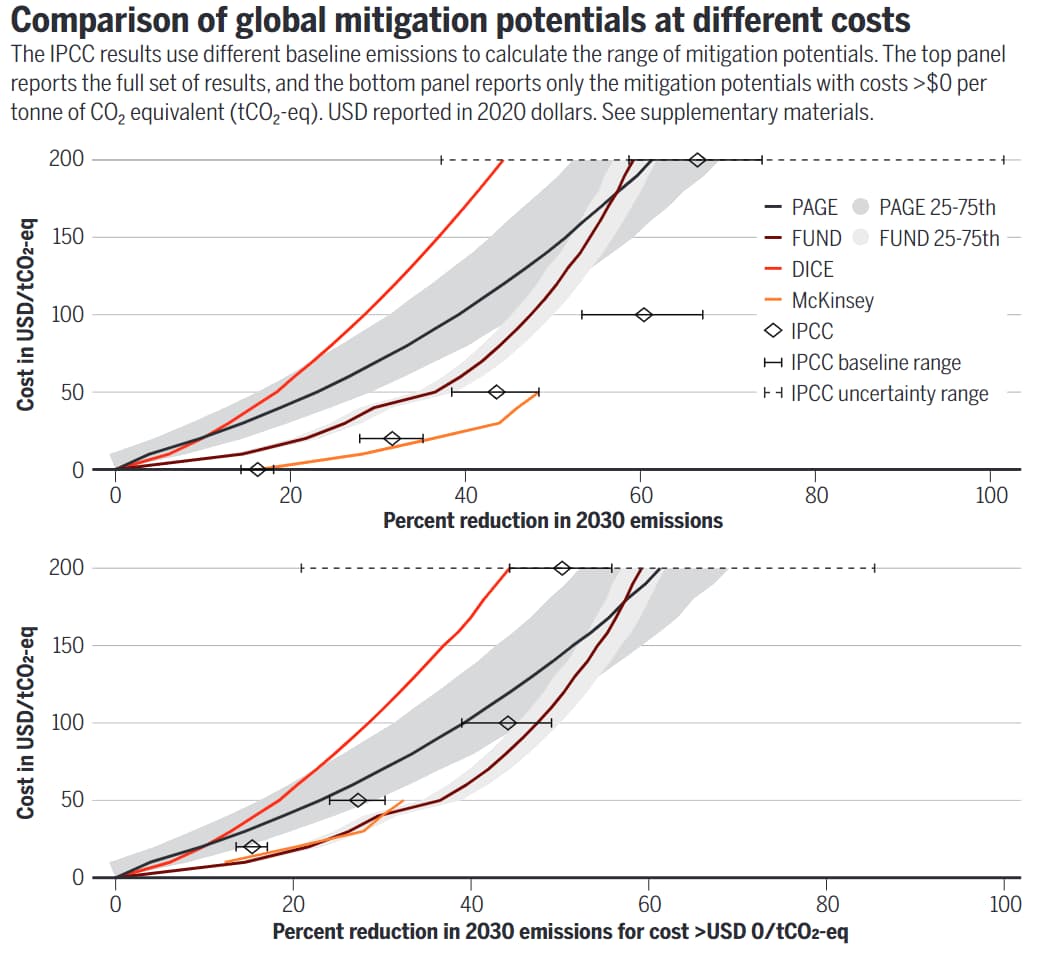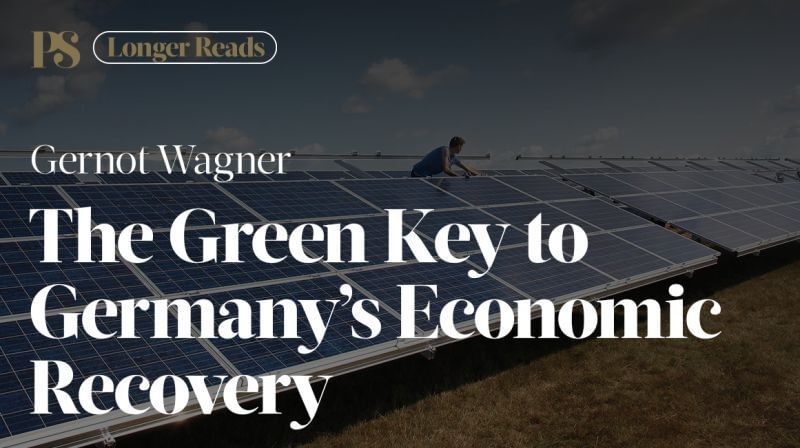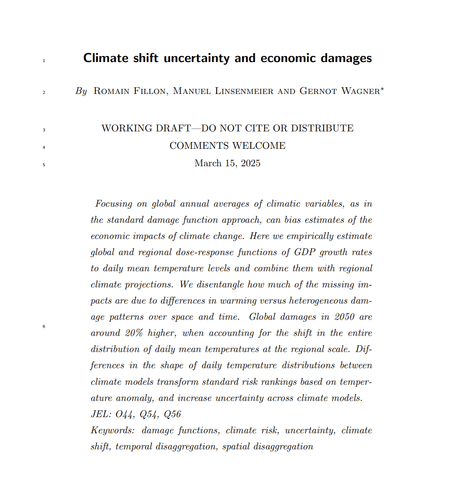The costs of “costless” climate mitigation
by Matthew J. Kotchen, James A. Rising, and Gernot Wagner
How much will it cost to meaningfully reduce greenhouse gas (GHG) emissions on a global scale? The answer is critical for assessments of how to address climate change—affecting public support, political will, and policy choices. We find that the “bottom-up” estimation approach emphasized by the United Nations Intergovernmental Panel on Climate Change (IPCC) reports considerably lower costs for emission reductions than leading “top-down” economic models. We also find that one core feature explains the vast majority of the difference: The bottom-up estimates include substantial reductions that appear to come at zero cost, or even at a savings, whereas the economic models assume no such “free lunch.” The fact that different methodological approaches produce different results may not be surprising. But that nearly all of the discrepancy loads on how much mitigation is seemingly costless raises important challenges for understanding and communicating the actual costs of reducing emissions.
We compare two of the leading approaches for estimating marginal mitigation costs: the bottom-up, sector-by-sector approach employed by the IPCC and others (1, 2), and the top-down approach built into leading integrated assessment models (IAMs) in the climate-economics literature focused on benefit-cost analyses (3–5). Research on the “energy efficiency paradox” foreshadows how results may differ between approaches (6, 7). The paradox arises because adoption rates of energy efficiency investments typically fall short of predictions based on the cost savings estimated by bottom-up, engineering approaches. The reason is that a full accounting of direct and indirect costs is not taken into consideration. This might suggest that the IPCC and other bottom-up approaches understate the full costs of reducing GHG emissions. But there may also be concerns with top-down estimates, as broad analyses of environmental and climate policies find that costs are likely overstated (8–10). We therefore find scope for a potential middle ground.

Full text: “The costs of “costless” climate mitigation.” ( PDF; Supplemental Materials)
Subsequent reply to a letter published in Science: “Accurately interpreting IPCC assessments—Response” (8 August 2024).


